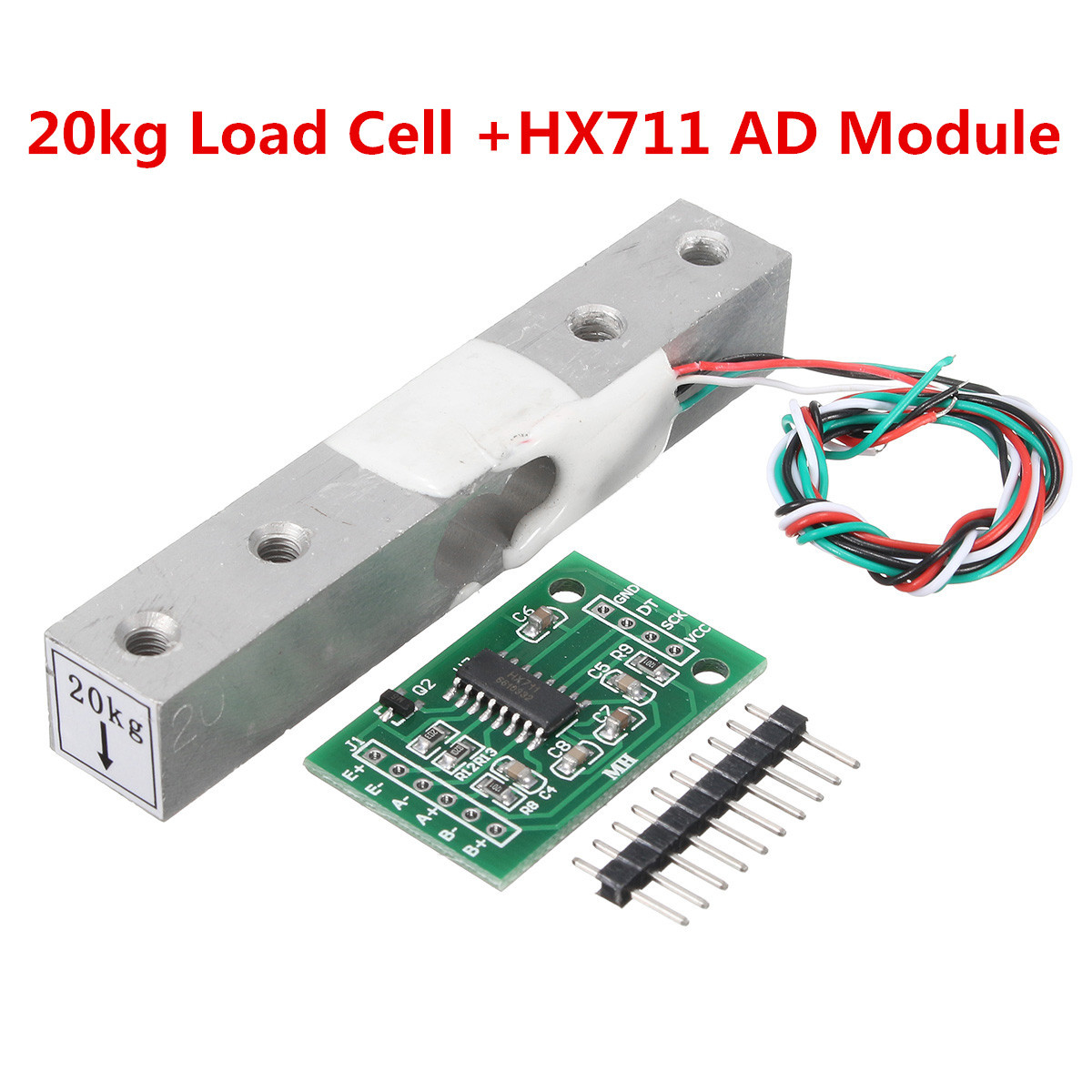Arduino Hx711 Weight Scale Interface 1 0 Software

HX711 Load Cell Amplifier Interface with Arduino November 25, 2016 Arduino, Arduino Tutorials arduino, HX711, load cell, measurement, weight Manoj R. Thakur HX711 Load. I found a dead scale at work, the electronics were fried. I figured the load cell inside was still good, and would be fun to hack. I stripped out the load cell, and connected it to an Arduino with a HX711 amplifier / 24 bit ADC.
This Instructable describes how to make a small weighing scale using readily available off the shelf parts. Materials needed: 1.
Arduino - this design uses a standard Arduino Uno, other Arduino versions or clones should work also 2. HX711 on breakout board - This microchip is specially made for amplifying the signals from load cells and reporting them to another mircocontroller. The load cells plug into this board, and this board tells the Arduino what the load cells measure.
5kg load cell - Load cells are specially shaped metal parts that have strain gauges glue to them. The strain gauges are resistors that change their resitance when they are bent. When the metal part bends, the resistance of the load cell changes (the HX711 measures this small change in resistance accurately). You can buy both the HX711 and load cell here: If you do purchase the kit please leave a review! It is really helpful for future buyers. Sturdy flat mounting surface (x2) - a stiff piece of hardwood or metal is ideal.
Wires in various colors for connecting all the parts 6. Power supply for Arduino. First we are going to mount the load cell. Your mount will be unique, but here are the guidelines you need to follow: 1. The aluminum load cell should have 4 tapped holes and a label showing the direction of force.Mount the side without the label to the fixed surface and mount the side with the label to the moving surface. The arrow on the labeled side should point down in the direction the platform will move when a load is applied.
The mounting plate and the moving plate should both be as rigid as possible 3. Make sure to put some form of rigid spacers between the mounting plates and the load cell. Standoffs or washers both work well. Kadhalikka neramillai serial audio song free download tamilwire.
The goal is that any force applied to the moving plate causes the load cell to bend and twist. Without spacers, load would be transferred directly from the moving plate to the fixed plate without affecting the load cell. This type of load cell should only be used to measure force in the direction of the arrow on the front, but you could definitely flip it over to measure a pulling force. This would only really be good for a permanently mounted scale since the force is on a cantilever. If you want to measure pulling force with a handheld device, you could follow most of the instructions but use 'S type' load cell (this would be very accurate. You could also buy a cheap digital luggage scale and remove the load cell.

Contents • • • • • • • • • • • • Introduction is based on HX711,which is a precision 24-bit analog-to-digital convertor designed for weigh scale and industrial control applications to interface directly with a bridge sensor.Compared with other chips, HX711 not only has a few basic function,also contains high integration,fast response,immunity,and other features.The chip lowedrs the cost of the electronic scale,at the same time,improving the performance and reliability. The input interface of this weight sensor module is used sensor interface,which is compatible with Arduino I/O port.The output adopts compact terminal that makes weight sensor module easier to connect the weight sensor.It's the best choose for electronic enthusiast to do some tiny home scale. The weight sensor module can be combined with weight sensor on the market. We also help you to pick a small range of weight sensor. Specification 24-Bit Analog-to-Digital Converter for Weight Scales (HX711) • Two selectable differential input channels • On-chip active low noise PGA with selectable gain of 32,64 and 128 • On-chip power supply regulator for load-cell and ADC analog power supply • On-chip oscillator requiring no external component with optional external crystal • On-chip power-on-rest • Simple digital control and serial interface: pin-driven controls, no programming needed • Selectable 10SPS or 80SPS output data rate • Simultaneous 50 and 60Hz supply rejection • Supply Voltage: 2.6V~5.5V • Current.